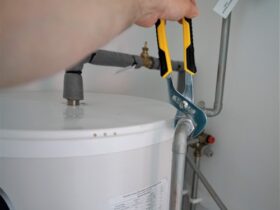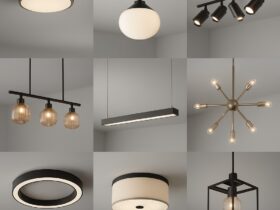Selecting new doors for your home involves balancing style, durability, and functionality. Consider your home’s architecture, energy efficiency needs, and the level of security you want. Materials like wood, fiberglass, and steel each offer unique benefits, from natural warmth to low maintenance. Pay attention to insulation, weather resistance, and design cohesion with your interior and exterior spaces. You can find replacement doors that enhance comfort, curb appeal, and long-term value by evaluating aesthetics, performance, and budget together.
Introduction
Choosing the right doors can transform your home’s appearance, make it more secure, and improve energy efficiency. Whether upgrading your front entry or replacing worn-out patio doors, understanding the key considerations for replacement doors will help you invest wisely and boost your home’s value. The process can appear overwhelming with countless options in style and material, but a structured approach will ensure a decision that improves both function and curb appeal.
From matching your home’s architectural design to prioritizing energy savings and robust security, each aspect deserves close attention. Examining the durability, maintenance requirements, and overall costs provides a foundation for an informed purchase. Following this comprehensive guide will allow you to select new doors that complement your home and your lifestyle for years.
- Assess your home’s architectural style to choose a complementary door design.
- Consider materials like wood, fiberglass, and steel for durability and maintenance needs.
- Prioritize energy efficiency to reduce utility costs and enhance comfort.
- Ensure the door offers robust security features to protect your home.
- Factor in maintenance requirements and long-term durability.
When thinking about your home’s overall efficiency and comfort, many homeowners also choose to upgrade their energy efficient windows at the same time. These improvements can work together to reduce utility bills and increase year-round comfort indoors significantly.
Assess Your Home’s Architectural Style
Begin your search by considering your home’s existing architecture and exterior features. The right door should enhance your property’s character, not clash with it. Contemporary homes look best with clean lines and minimalist hardware, while Craftsman, Colonial, or Farmhouse styles tend to favor solid wood doors, paneling, or decorative glass inserts. Prioritizing harmony between your entryway and the rest of your house instantly boosts curb appeal and overall aesthetic value, potentially adding to your home’s resale potential.

Choosing a color and finish that coordinates with exterior trim, siding, and other design elements is also essential. If you’re unsure which style fits best, consulting professionals or exploring resources like HGTV’s guide can provide beneficial inspiration.
Choose the Right Material
The construction material you select directly affects your new door’s longevity, security, and maintenance requirements. The three most common materials include:
- Wood: Prized for its beauty and warmth, wood can be custom-stained or painted to match your home. However, it does need regular upkeep—sanding, sealing, painting, or staining—to prevent issues like rot, warping, and fading.
- Fiberglass: This versatile material mimics the look of painted or stained wood but withstands fluctuating temperatures and moisture with minimal care. Fiberglass doors resist dents, cracks, and peeling and can be an excellent choice for both visual appeal and durability.
- Steel: Renowned for its strength, steel offers top-tier security and resilience. Many steel doors contain a foam core for insulation but may require occasional touch-ups to prevent rust, especially in humid climates. They’re ideal for those prioritizing safety and longevity.
Prioritize Energy Efficiency
Modern replacement doors often have insulated cores, multi-layer construction, and heavy weatherstripping to seal out drafts and reduce heat transfer. Choosing models with the Energy Star label ensures compliance with strict efficiency standards and can significantly impact utility bills. According to the U.S. Department of Energy, properly installed energy-efficient doors prevent unwanted air infiltration and enhance interior comfort, especially during seasonal temperature extremes.
Ensure Robust Security Features
Security should never be compromised, particularly for entry doors. A solid-core door, reinforced frame, and top-quality hardware are your first lines of defense. Features like multi-point locking systems and impact-resistant or laminated glass add further protection against forced entry. Opting for a door with factory-installed hardware instead of after-market add-ons ensures a better fit and integration. Additionally, consider peepholes, smart locks, or integrated cameras for modern security solutions that blend seamlessly with your lifestyle.
Consider Maintenance and Durability
Different door materials introduce varied maintenance routines. Wood, for example, needs periodic sealing to remain weather-resistant, while fiberglass surfaces can usually be cleaned with mild soap and water. Steel doors, although strong, require periodic inspections for chips or scratches that might lead to rust over time. Durable choices minimize upkeep and the risk of future repairs, letting you enjoy both visual and functional benefits for years with minimal hassle.
Evaluate Cost and Installation
Upfront cost is only one aspect of the total investment for new doors. High-quality, energy-efficient, and secure doors often cost more at purchase—but tend to pay off in long-term savings through reduced utility bills and fewer repair or replacement needs. Professional installation is recommended for optimal fit, insulation, and warranty maintenance. This ensures your new door performs well, looks great, and adds enduring value to your property. For additional insight on budgeting and installation, Better Homes & Gardens breaks down key factors influencing the total expense of door upgrades.
Conclusion
Selecting the perfect replacement door is a balance of aesthetics, durability, energy savings, security, and practicality. By thoroughly assessing your home’s unique needs and the features of available products, you can confidently invest in a door solution that increases your home’s comfort and lasting value. Careful research and wise choices now ensure satisfaction and peace of mind for many years ahead.



